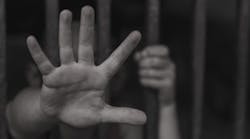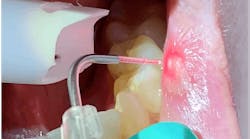Tips for dental clinicians to help identify and save sex trafficking victims one patient at a time
THE MORNING STARTED OUT LIKE ANY OTHER. Our front-office staff members were greeting patients, answering phones, and taking care of paperwork; and the clinicians were busy treating patients. One of our dental hygienists was treating a new patient who had visible scarring in her mouth, which can be a warning sign of sex trafficking.
Our clinical staff had gone over possible indicators of sex trafficking as part of their ongoing training, so the hygienist knew how to handle what could have been a very dangerous situation. As it turned out, there was a good explanation for the patient’s condition. She was not being harmed, and we were all relieved to know that she was OK. However, if that had not been the case, as a dental team, we were in a good position to recognize the warning signs and provide help without putting the victim, ourselves, or our other patients in danger. At the time, I remember thinking to myself: What if that had been my daughter?
According to a study (1) by the University of Texas at Austin, School of Social Work, child sex trafficking is the fastest growing crime in the world, with 79,000 young people being victims of sex trafficking in the state of Texas alone. As dental professionals, we are in a unique position to make a big difference in reducing those statistics and saving lives, one patient at a time.
Unfortunately, many in the dental profession say they don’t know what to look for or how to help. With this in mind, we want to share some tips on what to look for, in hopes that dental professionals everywhere will join the fight to end child sex trafficking.
Warning signs
The most significant warning signs of sex trafficking include the presence of visible injuries or scars in the mouth—particularly bruising on the floor and roof of the mouth—and/or a torn lingual frenulum that results from repetitive and/or forced oral sex. The lingual frenulum is the small fold of tissue that extends from the floor of the mouth to the midline of the underside of the tongue.
“If you have a child in your care with other warning signs of trafficking and visible injuries or scars in her mouth, then you can be pretty certain she is being trafficked, especially if she has a torn lingual frenulum,” notes Steven “Flyer” Phenix of The Refuge for Domestic Minor Sex Trafficking (DMST). “Call the hotline and 911 as quickly and covertly as possible.”
How to report a problem
Being covert is key. Victims and their companions panic easily and may make a run for it, putting the victim in even more danger. If you’re thinking about questioning a patient about an injury and are worried that you’ll be too invasive, then don’t mention it. Instead, find a way to call 911, or contact The National Human Trafficking Resource Help Center without being observed. Save the help hotline number as a contact in your cell phone, so you can call it as quickly and unobtrusively as possible. Call (888) 373-7888, or text HELP or INFO to 233733. Make sure everyone on your staff has access to these numbers at all times, but don’t post them where a predator might see them.
Other warning signs of sex trafficking include:
• Tattoos of ownership or money symbols
• A patient who appears younger than the stated age
Additional signs of abuse or neglect include:
• Excessive bruising anywhere on the body
• Cigarette burns
• Evidence of untreated dental needs
• Signs of malnutrition, such as swollen or bleeding gums, tooth decay, low body mass index, or extremely dry skin
Each case is different. Even the same abuser can inflict different injuries on different victims.
Behavior of victims
Victims may behave in various ways.
Here are some victims’ behaviors to watch for:
• Some may feel ashamed or afraid to speak up.
• Some may exhibit subordinate behavior.
• Some may exhibit hypervigilant or fearful behavior.
• When asked about personal or medical histories, some patients’ responses may sound scripted or rehearsed.
• Patients may have a constant companion who speaks for them and holds all of their identification paperwork.
Keep in mind
The presence of one or more of these warning and/or behavior indicators does not necessarily mean the person is a victim, but it is a cause for concern. Use your best judgment and trust your instincts. If something doesn’t feel right, contact the hotline and ask for help. The experts there can guide you through the next steps and provide much-needed support that doesn’t put you or the victim in more danger.
Gather this info if you suspect a victim
If you suspect a victim of sex trafficking, recall as much detail as you can about both the victim and the companion/pimp.
Try to remember these individual details:
• Height
• Weight
• Race
• Hair color
• Eye color
• Visible scars
• Tattoos
• Vehicle make
• Vehicle model
• Vehicle color
Tip: Try to take photos—particularly of the companion and vehicle—but do so without being spotted.
“If the pimp thinks you suspect the truth, he’ll go further underground, taking the victim with him and punishing her for a near discovery,” notes Phenix. “Remember as many details as you can and try to get photos, but be as inconspicuous as possible. Don’t approach the victim or the pimp. Call the police and the hotline, and let the experts take it from there.”
For more information, visit www.bethe1educate1save1.com.Reference
1. Busch-Armendariz N, Nale NL, Kammer-Kerwick M, et al. Human trafficking by the numbers: The initial benchmark of prevalence and economic impact for Texas. Final Report. The University of Texas at Austin. Institute on Domestic Violence and Sexual Assault. School of Social Work. idvsa-2016-human-trafficking-by-the-numbers.pdf. Published December 2016. Updated January 27, 2017.
Read more clinical dentistry articles at this link.
Editor's note: This article originally appeared in Breakthrough Clinical, a clinical specialties newsletter from Dental Economics and DentistryIQ.










